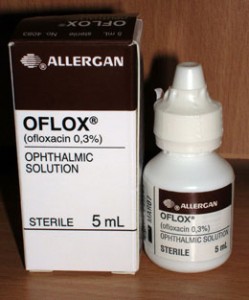Conjunctivitis is usually an infection caused by a virus or bacteria; however, you should be aware that such inflammation can also develop in response to allergies, such as allergies to eye medications, as well as spring allergies.
Infectious conjunctivitis (often referred to simply as ‘conjunctivitis’) appear in healthy people simply because they were infected, just like catching the flue or a throat infection. It is common for every person to have at least one or two episodes of conjunctivitis during their lifetime.
The duration of infectious conjunctivitis is usually a week to ten days, and rarely up to 3-4 weeks. Usually one eye is initially infected, often becoming bilateral within a few days. The ‘white of the eye’ turns red, a little painful, sore and sensitive. It is common to feel a foreign body sensation, as if something is in the eye (A feeling of sand or a lash in the eye). In addition there are usually white or sometimes yellow secretions. This discharge crumbles at the corners of the eyes, and make the eye lashes feel sticky when waking up in the morning and initially attempting to open the eyes. The eyes may hurt, feel irritated and with abnormally profuse teary. The combination of redness, swollen eyelids, secretions and irritation also give the sick person an unpleasant appearance. It’s hard to miss these eye infections, which usually present themselves afar, so it becomes impossible to hide it. Vision could be a little blurry during the course of the disease (temporarily!), and the eye feels highly irritating, uncomfortable and blinded and/or painful in response to sunlight. Until the patient recovers from conjunctivitis, he/she usually suffer a great discomfort.
Infectious conjunctivitis is very contagious. I repeat, conjunctivitis is extremely contagious and it is often the case that one family member infects other family members, be it children or adults. So it is highly recommended that individuals sick with conjunctivitis wash their hands very often, refuse to shake hands with other people, and avoid close contact with children, as in feeding them and holding them in your hands, in order to lessen the chances that they’ll become infected. It is important to remember that cutlery as well as towels could easily transfer such a disease, as can door knobs, shaking hands, linen and any other direct or indirect contact.
Despite the fact most that infectious conjunctivitis cases are viral (caused by a virus), some of them are caused by bacteria. Bacterial eye inflammations require treatment with antibiotic drops. It is important to realize that determining whether the inflammation is of viral or bacterial origin can be difficult or even impossible. Hence, since it is often impossible to make an accurate diagnosis, the eye doctor may consider prescribing antibiotics, presuming that even if the infection turns out to be viral, the antibiotic treatment, in the form of eye drops, would not harm the patient. Such antibiotic drops are usually taken 2-4 times a day and are sometimes accompanied by a drop or two of soothing drops, to help relieve irritation during the course of this markedly uncomfortable disease.
When a patient with conjunctivitis arrives at my clinic for diagnosis and treatment, I usually calm him/her down, and explain that this is an infection that will pass by itself in a week or two (up to 3-4 weeks in rare cases), possibly even quicker if treated with eye drops. However, it is uniformly impossible to get rid of the inflammation in less than week or two, so the patient must accept the fact that they will walk around with a red eye for a while, and perhaps need to make some adjustments in their daily activities until they are healed.
In the rare cases in which the patient develops a chronic conjunctivitis, which implies that the presumed infection has persisted for many weeks, other causative reasons (apart from a bacteria or virus) need to be considered. The two most common causes for a chronic course of conjunctivitis are an allergic reaction to an external irritant (such as a plant’ pollen or other environmental material), and an allergy (irritation) to regularly used eye drops. Eye drop allergies are common in people who use eye drops regularly for long periods of time, like glaucoma patients. In my clinic, a week does not pass without at least one patient harboring a chronic (weeks to months) red eye is diagnosed by me as suffering from an allergy to one of the glaucoma drops that he/she are taking. The agents on the very top of the list of eye drops causing allergies are Alphagan, Combigan and Iopidine.
In summary, an episode of conjunctivitis is quite (very) unpleasant, but usually does not endanger the long-term health of the eye. It is an extremely uncomfortable experience one must simply deal with for a week or two, until it quiets down, and try their very best to minimize the chances of passing it to other people. If you currently suffer from conjunctivitis, remember:
- It is very, very (very) contagious
- If it appears gradually (builds up slowly) and remains for over a month, non-infectious reasons need to be considered, such as an allergy to chronic eye medications (such as for glaucoma) or an allergy to some environmental or plant-derived material
- As nasty as a conjunctivitis feels, it WILL (!) go away and most often NOT leave you with any residual discomfort or damage to the infected eye.

